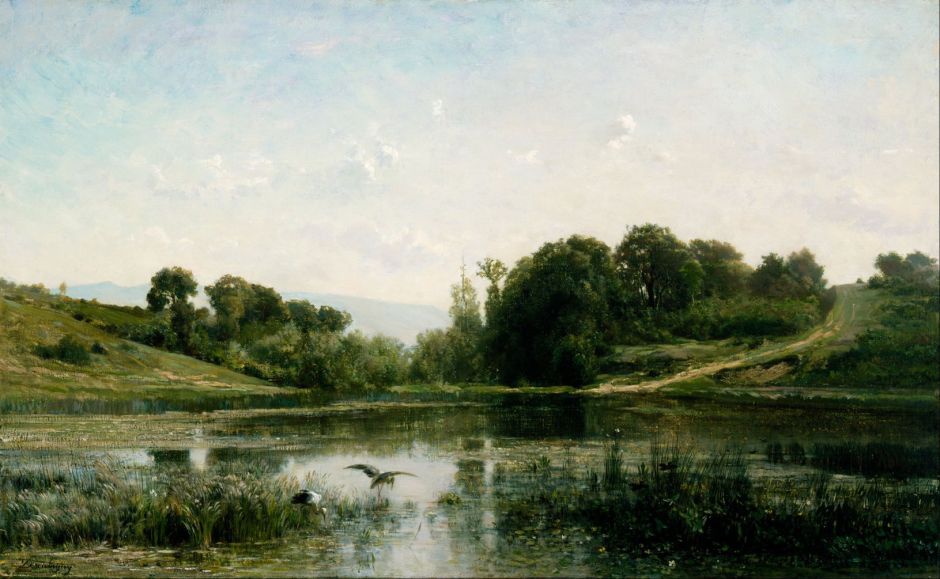Among the birds that appear not infrequently in paintings is the European grey heron, a large wader common throughout Europe, Asia and Africa. Its appearance and size are sufficient to make it recognisable in many paintings of wetlands, although in life it’s usually very shy of humans and hardly likely to pose for the painter. It does have two mythical associations: with the ancient Egyptian god Bennu, and as a bird of divination and augury for Romans of classical times.

Aelbert Cuyp’s Orpheus with Animals in a Landscape from about 1640 is one of at least two different paintings he made of this story. Here he has included a wide range of both domestic and exotic animals and birds, including a distant elephant, an ostrich, herons and wildfowl, although Orpheus is seen playing a violin rather than a lyre.

Hans Thoma painted his fascinating Wondrous Birds in 1892, and it’s a superb portrait of herons in flight, a common sight across much of the countryside of Europe. It’s only in recent years that specialist wildlife photographers have been able to fly with the birds in the way that Thoma imagined.
There are plenty of landscapes featuring the occasional heron.

Aelbert Cuyp’s Cattle near the Maas, with Dordrecht in the Distance has a milkmaid at work on one of the cows, a slightly awkward-looking heron at the lower left corner, and a magnificent sky.

In Alexandre Calame’s View of Bouveret from 1833, the mountains remain distant and almost lost from view, as a grey heron stalks at the water’s edge in the foreground. Bouveret is at the southern end of Lake Geneva, close to the border with France.

Arnold Böcklin’s Megalithic Tomb (1847) features anonymous figures apparently engaged in a mystical ceremony at this isolated location just below the snowline in the mountains. In the foreground is a boggy lake with a heron stepping out from cover.

Charles-François Daubigny’s great success at the Salon of 1853 was The Pond at Gylieu, which earned him a first-class medal, and was bought by Emperor Napoleon III. The detail below shows its pair of grey herons.


Emilie Mediz-Pelikan probably painted her Heron at the Wooded Bergsee late in the nineteenth century.

Late in his career, George Inness painted The Home of the Heron (1891), although as the bird is quite small, it’s not clear whether this is one of the North American species.

After he had made the last copy of his famous The Shore of Oblivion in 1916, Eugen Bracht continued to paint until his death. Stormy Day from 1920 is a fine example of his Impressionist skying, with a heron in flight over inky grey clouds near the horizon.
Dead herons have also been featured in some still life paintings, and seem to have been popular among the French Impressionists.

Frédéric Bazille painted this Still Life with Heron in November 1867, when Auguste Renoir painted Frédéric Bazille Painting at his Easel. Although this appears to be a faithful record of Bazille at work, there’s no sign of his subject. At this time, Renoir was sharing a studio with Bazille.


Another who painted a dead heron that year, probably the same specimen, was Alfred Sisley.

